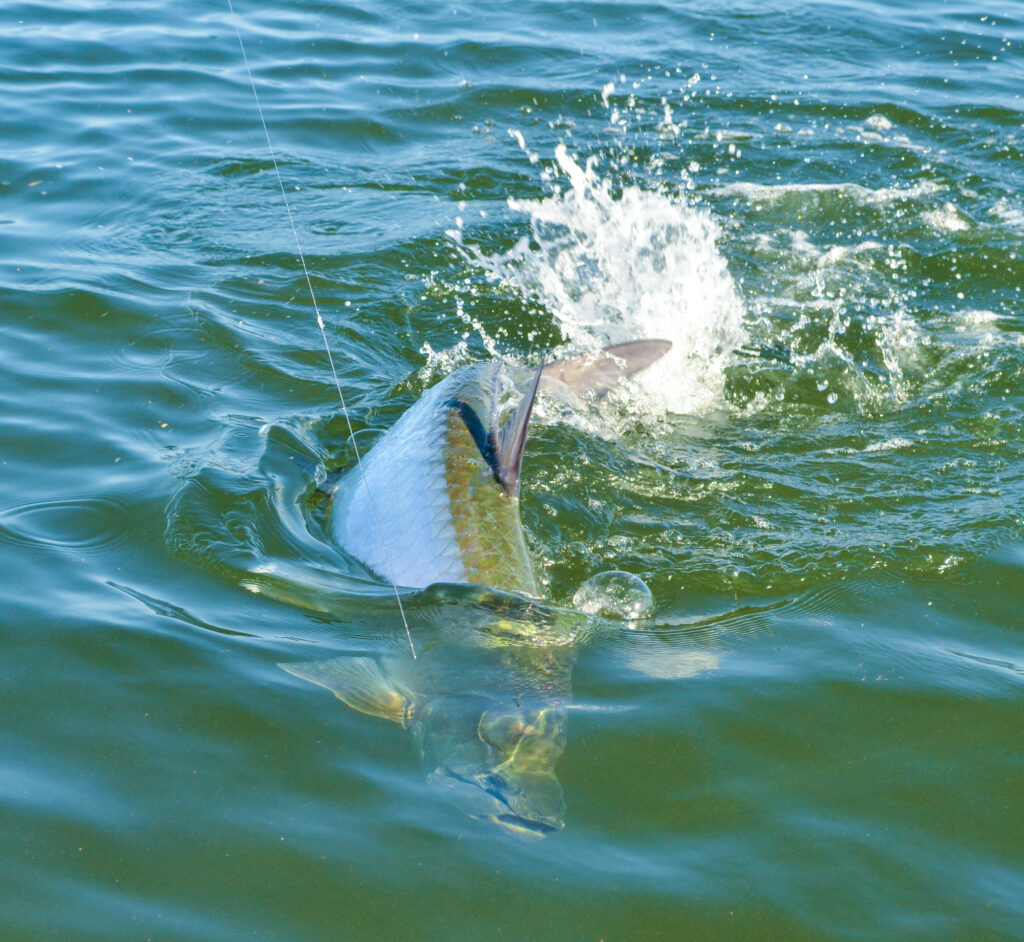Recently published research from scientists at Texas A&M, partly funded by Bonefish & Tarpon Trust, provides information important for the management of juvenile tarpon habitats in Texas, and builds on our understanding of adult tarpon migrations.
Juvenile Tarpon in Texas
The study analyzed decades of data from the Texas Parks & Wildlife Department sampling program, and found that abundance of juvenile tarpon in sampling has increased over the past four decades, especially over the most recent decade, which is great news.
Juveniles were most abundant in southern Texas estuaries, likely due to low water temperatures in winter in the northern estuaries. But as winter temperatures continue to rise due to climate change, we should expect more juvenile tarpon to survive winter in the northern estuaries.
An important conclusion of the study was that salinity was an important factor in when and where juvenile tarpon were captured. This information will be especially important for conservation strategies since salinity is strongly influenced by freshwater flows from land. Thus, freshwater flow management, in addition to habitat protection, should be a focal point of management measures.
Adult Tarpon Migrations
In October 2023, we reported some of the results of the Tarpon Acoustic Tagging Project, which revealed that adult tarpon migrations to and from Florida split the population into two sub-groups. Mixing in the Florida Keys during spawning season, one subgroup of tarpon migrates along the eastern US coast; the other subgroup migrates along the Gulf of Mexico coast as far as the Mississippi Delta.
The new research from Texas completes the adult migration picture. Also using acoustic tracking, the researchers tracked 16 tarpon that were tagged along the Texas coast, and two that were tagged east of the Mississippi River Delta. None of the tarpon tagged crossed the Mississippi Delta. In the fall, Texas-tagged tarpon migrated southward along the western Gulf of Mexico toward Mexico. The tarpon tagged east of the Mississippi Delta migrated south and were detected in Florida.
Combining the results of these two studies, we now know that our regional adult population is actually made up of three subgroups – one that migrates along the US east coast, one that migrates along the eastern coast of the Gulf of Mexico, and one that migrates along the western coast of the Gulf of Mexico. The eastern Gulf and Atlantic subgroups mix seasonally in South Florida during spring spawning season. In contrast, the strong influence of the Mississippi River outflow may create a barrier that maintains an east-west split in the northern Gulf of Mexico.
Importantly, in both acoustic tracking studies, tarpon showed repeated seasonal migration patterns. They showed the same timing of seasonal migrations and tended to use the same routes and locations.
Conservation Implications
As BTT is advocating in Florida, Texas efforts toward juvenile tarpon conservation should focus not only on habitat protection (and restoration, where appropriate), but also on management of freshwater flows into estuaries. The research out of Texas showed the importance of salinity to juvenile tarpon abundance, and alteration of freshwater flows into estuaries is highly influential on salinity. In general, alterations in the timing, quantity, and quality of freshwater flows causes ecological impacts in estuaries, which may affect tarpon as well as their prey.
The adult migration data reveal that each region depends upon a finite portion of the overall adult tarpon population to sustain our fisheries. Thus, apparently issues that impact tarpon, like red tide in southwest Florida, will have an impact on the regional subgroup of tarpon. And that since younger tarpon likely learn migration patterns from older tarpon, and repeat these patterns, disturbances like pollution events might have longer term implications. That these regional migrations cross jurisdictional borders (state or national), further complicates the challenge, and calls for a regional outlook on tarpon conservation.
Importantly, in contrast to the adult migration findings of three subgroups, genetic data suggests that we have one large regional population. This is probably because after being spawned, larval tarpon can be carried considerable distances during the 30 or so days they are drifting in ocean waters. A larval tarpon that hatches after being spawned in the Gulf of Mexico, for example, might end up in an estuary on the east coast of Florida. More research on tarpon population genetics is urgently needed to better address this important topic.




